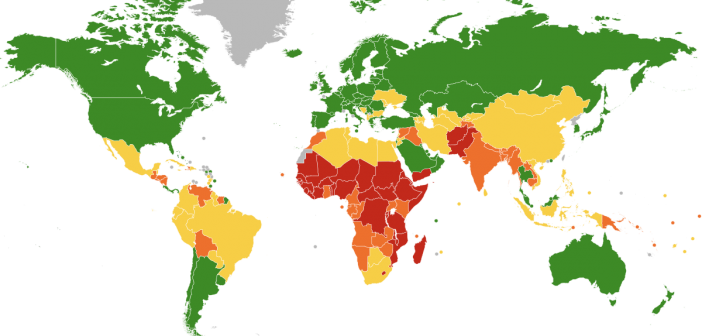India’s Human Development Index (HDI) for 2023 stands at 0.644, placing it 134th out of 193 countries in the global ranking. Although classified as “medium” in human development, India has shown notable progress since the early 1990s. Over three decades, life expectancy in India has increased by approximately nine years, expected years of schooling have risen by 4.6 years, and per capita income has seen a significant boost, growing by nearly 287% since 1990. Despite this progress, several socio-economic challenges continue to impact India’s human development, particularly in areas of education, health, income inequality, and gender parity.
Key Components of India’s HDI
- Life Expectancy: Life expectancy in India has consistently improved, reaching 70.9 years. Although it has risen steadily, this remains below the global average, indicating room for improvement in public healthcare access and quality, especially in rural and underserved areas.
- Education: The education index in India has seen major improvements, with expected schooling years now averaging 12.2 and mean years of schooling at 6.7. While access to education has expanded, particularly through initiatives like the Right to Education (RTE) Act, quality and infrastructure disparities between urban and rural areas remain, affecting overall educational outcomes.
- Gross National Income (GNI) per capita: India’s GNI per capita has grown substantially, though it still ranks lower compared to other medium-HDI nations. Rising income inequality is a concern, as it has been identified that the top 10% of India’s population holds a large share of the national wealth, contrasting sharply with the economic conditions of the bottom segments.
Gender Inequality and Labour Participation
India ranks 108 out of 166 on the Gender Inequality Index (GII), indicating persistent challenges in achieving gender equality. Women’s participation in the labor force stands at 28.3%, far lower than men’s 76.1%. Efforts to close this gap are ongoing, with a focus on skill development and inclusive policies to support female entrepreneurship. However, societal factors, combined with limited job opportunities in certain sectors, have slowed progress in this area.
Regional Inequality and Infrastructure
India’s HDI varies significantly across its states. While states like Kerala, Himachal Pradesh, and Maharashtra demonstrate high human development scores due to better healthcare, education, and infrastructure, other states such as Bihar, Uttar Pradesh, and Jharkhand face more significant challenges. Addressing regional disparities remains critical to achieving national HDI improvement, with efforts needed in transportation, digital access, and social services to reach underserved regions.
Global Comparisons and Pandemic Impact
India’s HDI value has shown resilience despite setbacks from the COVID-19 pandemic, which impacted health, income, and education. Globally, the pandemic created a widening gap between developed and developing nations, with the HDI of many nations not yet returning to pre-pandemic levels. While wealthy nations have rebounded, countries with developing economies, including India, continue to experience a slower recovery.
Policy Implications and Future Prospects
With continued investments in education, healthcare, and digital infrastructure, India can make further strides in human development. Digital public infrastructure initiatives, for example, hold promise for improving healthcare access and educational quality across the nation. Additionally, India’s focus on sustainable economic growth and climate action, as seen through recent environmental initiatives, aligns with global goals for equitable human development.
In conclusion, while India’s HDI ranking reflects substantial achievements, further progress in reducing gender inequality, regional disparities, and health access is essential for sustainable human development. These areas, coupled with inclusive economic policies, will be pivotal as India strives to achieve its development objectives by 2030.





